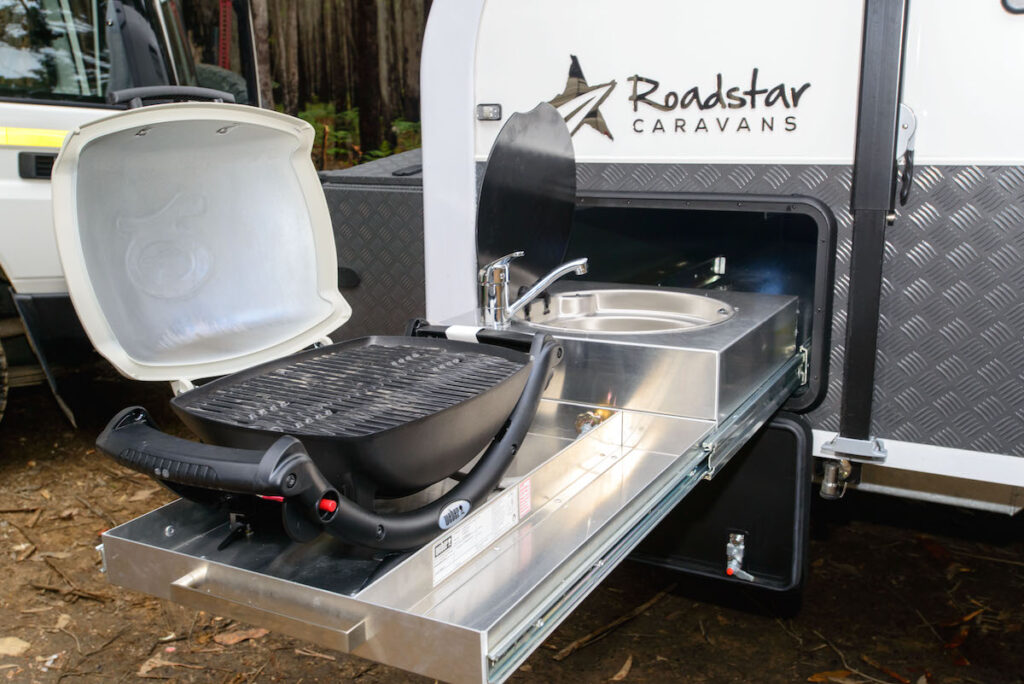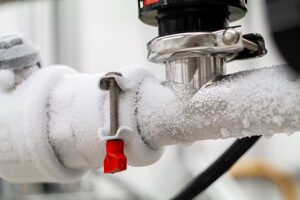Introduction to Dual Axle Caravans
Basics and Importance of Having a Level Caravan
Dual axle caravans, characterized by their two sets of wheels on either side, are a popular choice among caravaners due to their stability and ability to carry heavier loads. The design provides a smoother ride and reduces the swaying motion, especially vital during long journeys. However, despite their inherent stability, ensuring they are level when parked is crucial for both safety and functionality. A level caravan ensures that all onboard systems, like refrigerators and cookers, operate efficiently and safely.
Moreover, a level caravan provides comfort to the inhabitants and ensures that all moving parts, like doors and windows, function correctly. When a caravan is not level, doors may swing open or closed unexpectedly, and items inside the caravan may shift, potentially causing damage or injury. Therefore, understanding the basics of leveling a dual axle caravan and recognizing its importance is the first step towards a safe and enjoyable caravaning experience.
Understanding Leveling
Why Leveling is Crucial: Discussing Stability, Safety, and Comfort
Leveling a caravan is not merely a practice but a necessity to ensure stability, which directly correlates with the safety of the occupants and the integrity of the caravan’s structure. An unlevel caravan can pose risks, such as uneven weight distribution leading to structural stress and potential damage over time. Furthermore, in certain conditions, an unlevel caravan may become unstable, posing a risk of tipping or rolling, especially in adverse weather conditions.
Comfort is another pivotal aspect influenced by leveling. When a caravan is not level, everyday activities like sleeping, cooking, and simply moving around inside the caravan can become inconvenient and uncomfortable. Sleeping on a slope can be particularly uncomfortable and potentially harmful to one’s back and neck. Thus, understanding and implementing accurate leveling techniques is imperative to ensure a safe and comfortable living space within the caravan.

Tools and Equipment for Leveling
Detailed Guide on Various Tools like Leveling Ramps, Blocks, Pads, and Wedges
Leveling a dual axle caravan necessitates the use of specific tools and equipment designed to facilitate the process. Leveling ramps are one of the most common tools used, designed to gradually elevate the caravan to the desired level. They are typically placed in front of the wheels, and the caravan is then driven onto them until the correct level is achieved. Blocks and pads serve a similar purpose, providing a stable base to elevate the caravan to the desired height and can be placed under the wheels to achieve leveling.
Wedges, on the other hand, are placed beneath the wheels and can be particularly useful on sloping sites, allowing the caravan to be elevated at one end. It’s crucial to understand the specific applications and limitations of each tool, ensuring they are utilized effectively and safely. A detailed guide on using these tools, considering the caravan’s weight and size, can provide caravaners with the knowledge to level their vehicle accurately and safely.
Step-by-Step Guides
Detailed Walkthroughs for Using Different Leveling Methods and Tools
A step-by-step guide to leveling a caravan involves a systematic approach, starting with assessing the ground where the caravan will be parked. Utilizing a spirit level, caravaners can determine which side requires elevation. Once identified, tools like leveling ramps can be positioned in front of the wheels that need to be raised. As the caravan is slowly driven onto the ramp, continuous checking with the spirit level ensures accurate leveling.
The subsequent steps involve securing the caravan in its leveled position. This could involve using wheel chocks to prevent any movement and adjusting additional stabilizing equipment, such as the jockey wheel or stabilizer legs, to ensure the caravan remains steady and secure. A detailed walkthrough, including safety checks and troubleshooting tips, can be invaluable to both novice and experienced caravaners.

Safety Precautions
Discussing the Safety Aspects and Precautions to Take While Leveling a Caravan
Safety is paramount when leveling a caravan, and several precautions must be adhered to in order to prevent accidents or damage. Firstly, always ensure that the leveling tools used are in good condition and are rated for the weight of the caravan. Utilizing equipment that is not designed to bear the load of the caravan can result in failure of the tool and potential damage to both the caravan and the occupants.
Moreover, when leveling, it’s crucial to ensure that the caravan is immobilized to prevent unintended movement. This involves applying the caravan’s brakes, using wheel chocks, and ensuring that the caravan is not left unattended when it is on ramps or wedges until it is securely leveled and stabilized. Adhering to safety precautions and being mindful of the potential risks involved in leveling can prevent mishaps and ensure a secure and stable setup for your caravan.
Troubleshooting Common Issues
Addressing Common Problems and Solutions While Leveling Dual Axle Caravans
Troubleshooting common issues during the leveling of a dual axle caravan involves identifying and resolving problems that may arise during the process. One common issue is the caravan slipping or moving during leveling, which can be addressed by ensuring that wheel chocks are securely placed and that the ground is not too slippery or uneven. Additionally, caravaners may face issues with leveling tools sinking into soft ground, which can be mitigated by using larger pads or boards under leveling ramps or blocks to distribute the weight more evenly.
Another prevalent issue is the caravan not maintaining a level position due to uneven weight distribution inside the vehicle. Ensuring that the load within the caravan is evenly distributed, and checking for any shifts in items that could alter this balance, is crucial. Addressing these and other common issues in your article will provide readers with practical solutions and help them navigate through the challenges that may arise during the leveling process.
Maintenance of Leveling Tools
Ensuring Longevity and Reliability of Leveling Tools and Equipment
Maintaining the leveling tools and equipment is pivotal to ensure their longevity and reliability. Regular checks for any signs of wear, cracks, or damage to leveling ramps, blocks, and wedges are essential to prevent failure during use. Caravaners should ensure that the tools are cleaned after use to remove dirt, mud, or debris, which could otherwise lead to degradation of the materials, especially in tools made from plastic or other composite materials.
Moreover, storing the leveling tools properly when they are not in use is also vital to prevent unnecessary wear and tear. They should be stored in a dry and cool place, away from direct sunlight and extreme temperatures, which could affect their structural integrity. Providing tips on regular maintenance checks and proper storage in your article will assist caravaners in keeping their leveling tools in optimal condition, ensuring safety and reliability during their travels.

Expert Tips and Tricks
Sharing Insights and Tips from Experienced Caravaners for Efficient Leveling
Expert tips and tricks can significantly enhance the efficiency and safety of leveling a dual axle caravan. Experienced caravaners often have insights into making the leveling process smoother, such as choosing the most suitable leveling method based on specific ground conditions or creating makeshift solutions in the absence of traditional leveling tools. For instance, utilizing specific driving techniques while using leveling ramps, or creating stable, makeshift pads from available materials in emergency situations, can be invaluable tips for readers.
Moreover, experts may also provide tips on ensuring that the leveling process is quick and stress-free, such as marking optimal positions on leveling ramps for different common ground conditions, or creating a checklist to ensure that all steps are followed accurately and safely. Including such expert tips and tricks in your article will not only enhance its value but also provide readers with practical knowledge that can make their caravaning experience more enjoyable and secure.9. Legal and Compliance Aspects
Discussing Any Legal Requirements Related to Caravan Leveling and Travel
Legal and compliance aspects related to caravan leveling and travel can vary significantly based on geographical location and local regulations. It’s pivotal to discuss the importance of adhering to any legal requirements, such as weight limits, permissible leveling methods, or specific guidelines related to parking and stabilizing a caravan in various locations. Ensuring that the caravan and its leveling tools comply with road and site regulations is crucial to avoid fines, penalties, or potential legal issues during travel.
Moreover, discussing the importance of understanding and adhering to site-specific rules, especially in caravan parks or camping sites, is also vital. Some sites may have specific guidelines related to where and how a caravan can be leveled, and failing to comply with these can result in eviction from the site or other penalties. Providing readers with a general overview of the legal and compliance aspects, and encouraging them to familiarize themselves with specific local regulations, will ensure that they are prepared and informed during their travels.

Case Studies
Sharing Real-Life Instances Where Proper Leveling Prevented Mishaps or Improved Caravaning Experience
Incorporating case studies into your article provides readers with real-world scenarios that highlight the importance and impact of proper caravan leveling. Sharing instances where accurate leveling prevented potential mishaps, such as avoiding instability during adverse weather conditions or ensuring the optimal functioning of onboard systems, can provide tangible examples of the theoretical knowledge discussed in the article. It illustrates the practical application of the tips, tricks, and guidelines provided, making them more relatable and understandable for readers.
Additionally, case studies where improper leveling led to issues or accidents can serve as cautionary tales, emphasizing the importance of adhering to safety guidelines and utilizing proper leveling methods. These real-life examples serve to reinforce the information provided in the article, offering readers a comprehensive understanding of the subject matter from both a theoretical and practical perspective, thereby enhancing the overall impact and usefulness of the article.
Conclusion
Summarizing Key Points and Encouraging Safe and Enjoyable Caravaning Experiences
Concluding the article involves summarizing the key points discussed, reiterating the importance of proper leveling of a dual axle caravan for safety, comfort, and functionality. A well-crafted conclusion should encapsulate the primary messages, providing readers with a succinct recapitulation of the knowledge imparted, and ensuring that the pivotal aspects of caravan leveling are firmly impressed upon their minds.
Moreover, the conclusion should also encourage readers to apply the knowledge, tips, and guidelines provided in their caravaning adventures, ensuring safe and enjoyable experiences. Inviting readers to share their experiences, tips, or any additional queries in the comments or through direct communication can also foster engagement and create a community where caravaners can share and gain knowledge, further enhancing their skills and understanding of caravan leveling.



